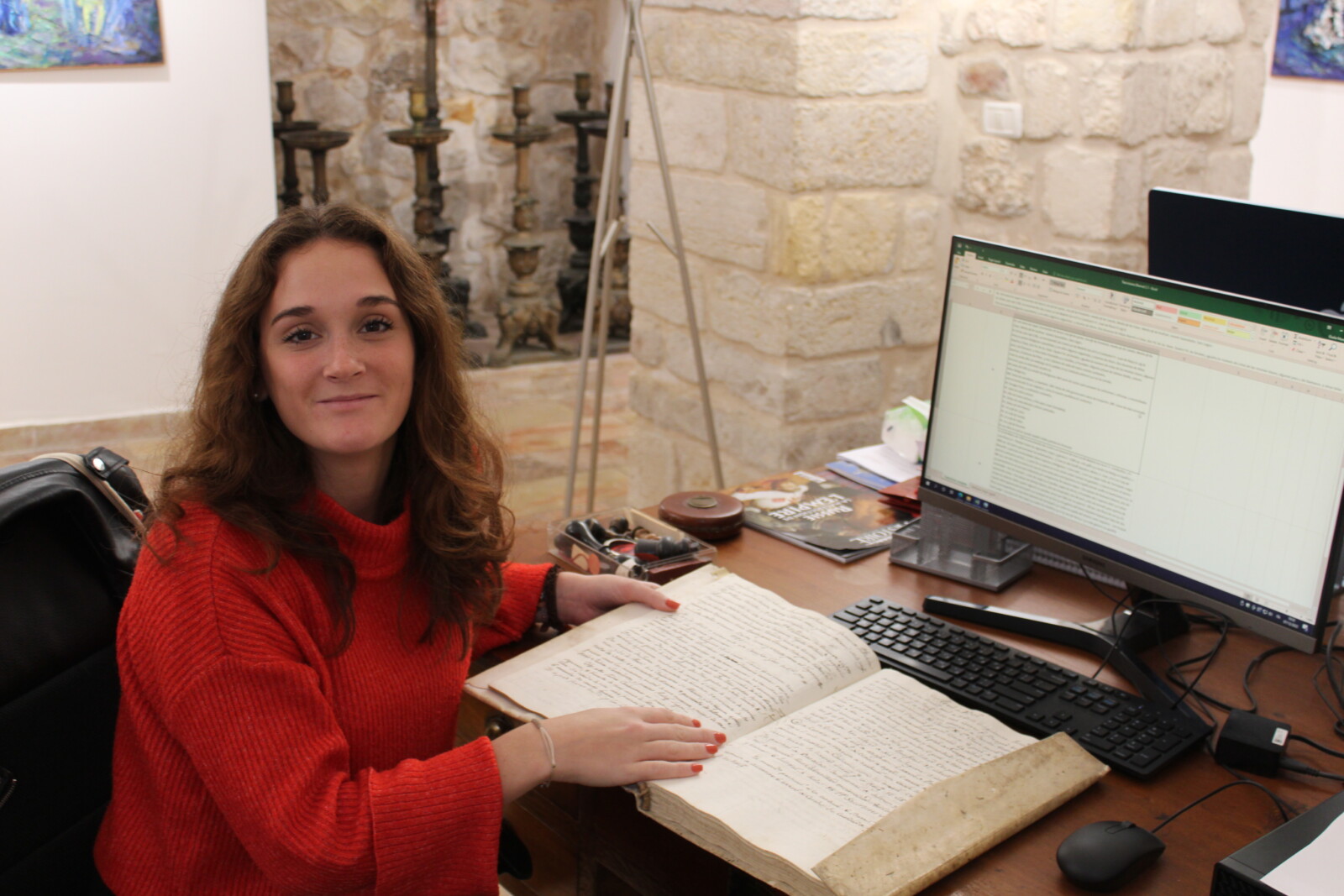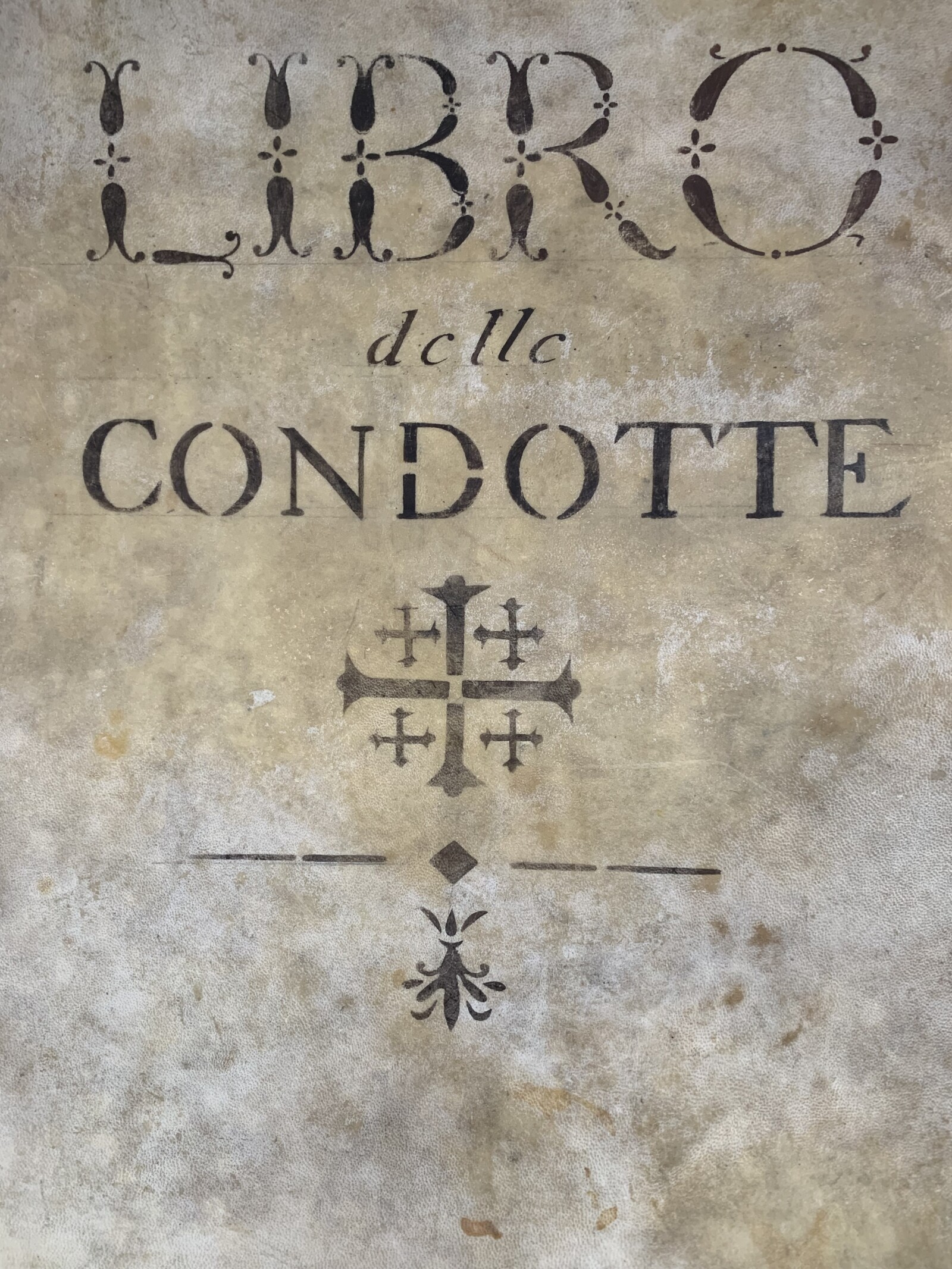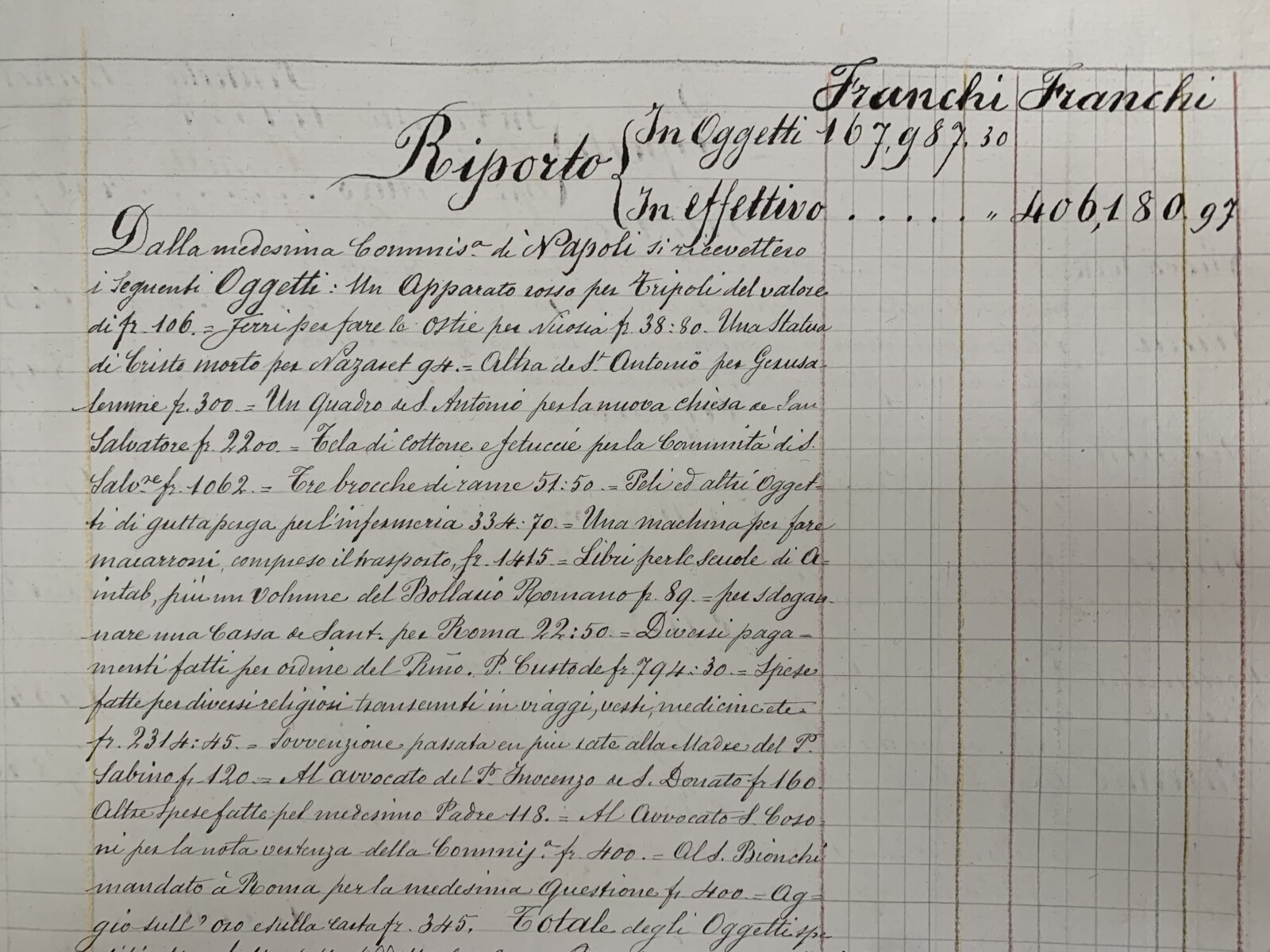Giulia Morotti, Guardian of the Condotte
From at least the 16th century until the 1990s, the friars recorded by hand all donations received for their works in the Holy Land. Their study reveals an untold story of the links between the Custody and the faithful around the world. This is what Julia Morotti, studente at the Università Cattolica del Sacro Cuore in Milano, ‘custodian of the conduits’, reveals to us.

Giulia, how did you hear about the Franciscan museum?
I met the Franciscan museum thanks to the Italian Civil Service, to which I applied in January 2022. The work of studying and assisting with the cataloguing of the heritage of the Terra Sancta Museum was part of the project. I arrived in Jerusalem in July and then I began my year of volunteering at the Cultural Heritage office.
What are the Condotte?
The Condotte, as they are commonly called, are handwritten registers of gifts to the Custody of Holy Land. This one title typically refers to a diversity of objects. On the one hand there are the real registers, in which you can find, in order of arrival, objects of value such as: food, clothing and textiles, building materials and money. On the other hand, there are the registers of the Conduttori, i.e. those who were responsible for transporting the Condotte to the Holy Land, and then we have other manuscripts containing “cedule”, official documents, receipts and accounting notes. The Condotte from the sixteenth to the twentieth century have been preserved and can be consulted. It is, therefore, a heterogeneous group in content, dating and appearance comprised of 16 manuscripts, now preserved in the Historical Archives of the Custody.

What kind of work has been done over the years with the Condotte, and what is still to be done?
Over the last few years, thanks to other volunteers who, like me, were committed to this project, work was done to transcribe the content of the Condotte, with the purpose of recognizing the objects described upon arriving in Jerusalem. This type of work continues to take a long time, especially because the writing often betrays the nationality of the writer, thus making the comprehension of the text an obstacle course between Italian and Spanish. This is made even more difficult if you work with seventeenth-eighteenth century manuscripts, because the language is not the same as the modern! More recently, in addition to the transcription and study of resources, the digitization project was born, to enable a more efficient approach to working with the content.

Which of these impressed you the most?
Each register has its own life: it tells of a historical period, of the relationships of the Custody with certain countries and tells who was behind the pen. Thus, the objects that emerge have enormous interest. However, I must admit, one issue in particular keeps me awake at night: there are two “twin” Condotte, that is to say two different manuscripts that report the exact same contents. This poses a big question mark regarding how these registers were used in the administrative life of San Salvatore, and above all poses an even bigger question: how many of these registers have been lost?
How do you put your experience at the service of the Terra Sancta Museum?
I graduated with a bachelor’s degree in Modern Literature, and then I continued my studies to earn a master’s degree in Modern Philology, and I believe that this course of study has helped me in carrying out the work of transcription and study of the Condotte. On the one hand you must be perceptive and intuitive in reading these manuscripts, but on the other hand, the skills learned from study of paleography, of bibliology, and philology have helped with the work. Sometimes an incomprehensible word is simply a writing error, at other times if the copyist is Spanish, but the language of the Condotta is Italian, you can guess some “hybrid” words. My studies have taught me a certain way of thinking: in this case I assume that these are registers written under dictation, and this leads me to hypothesize a certain predictable behavior of the writer, including errors. Predictability helps any attempt to decipher writing that is difficult to read.

Anything else to add?
Over the last few years, the Condotte have attracted the interest of scholars and researchers from all over the world, who sift through them in search of a precious object or an important story, which they can certainly find there. I believe that, in the same way, we must begin to look at them not only for what they contain, but for the stories they tell, for the events that revolve around them, for the hundreds of people involved: friars, fathers, Conduttori, kings, queens, emperors. The attempt is to recover an overall history, in which the Condotte are a piece of the great puzzle that is made up of the love and attention of the whole world for the Holy Land.
(Translated from French by Joan Rundo)



